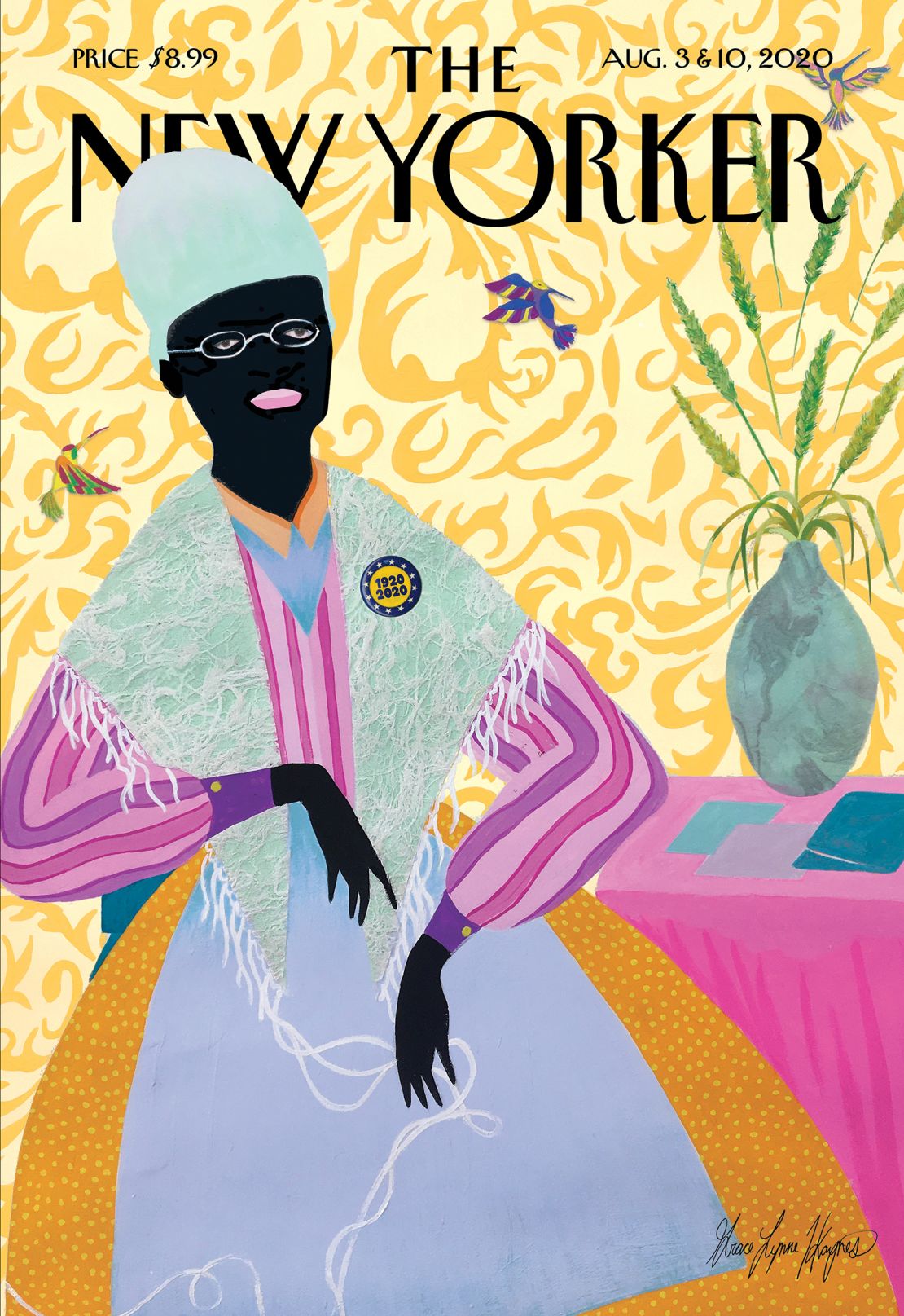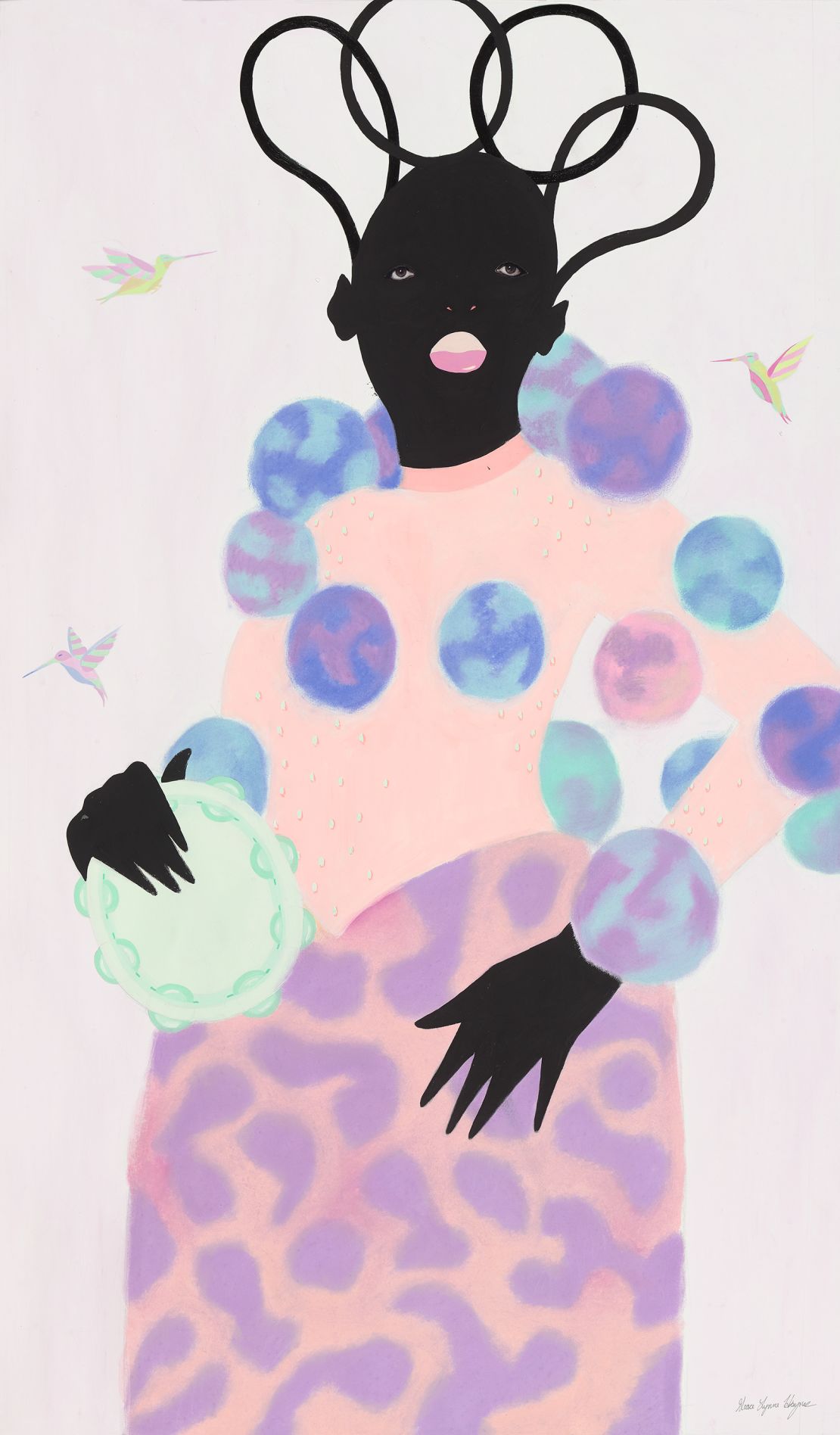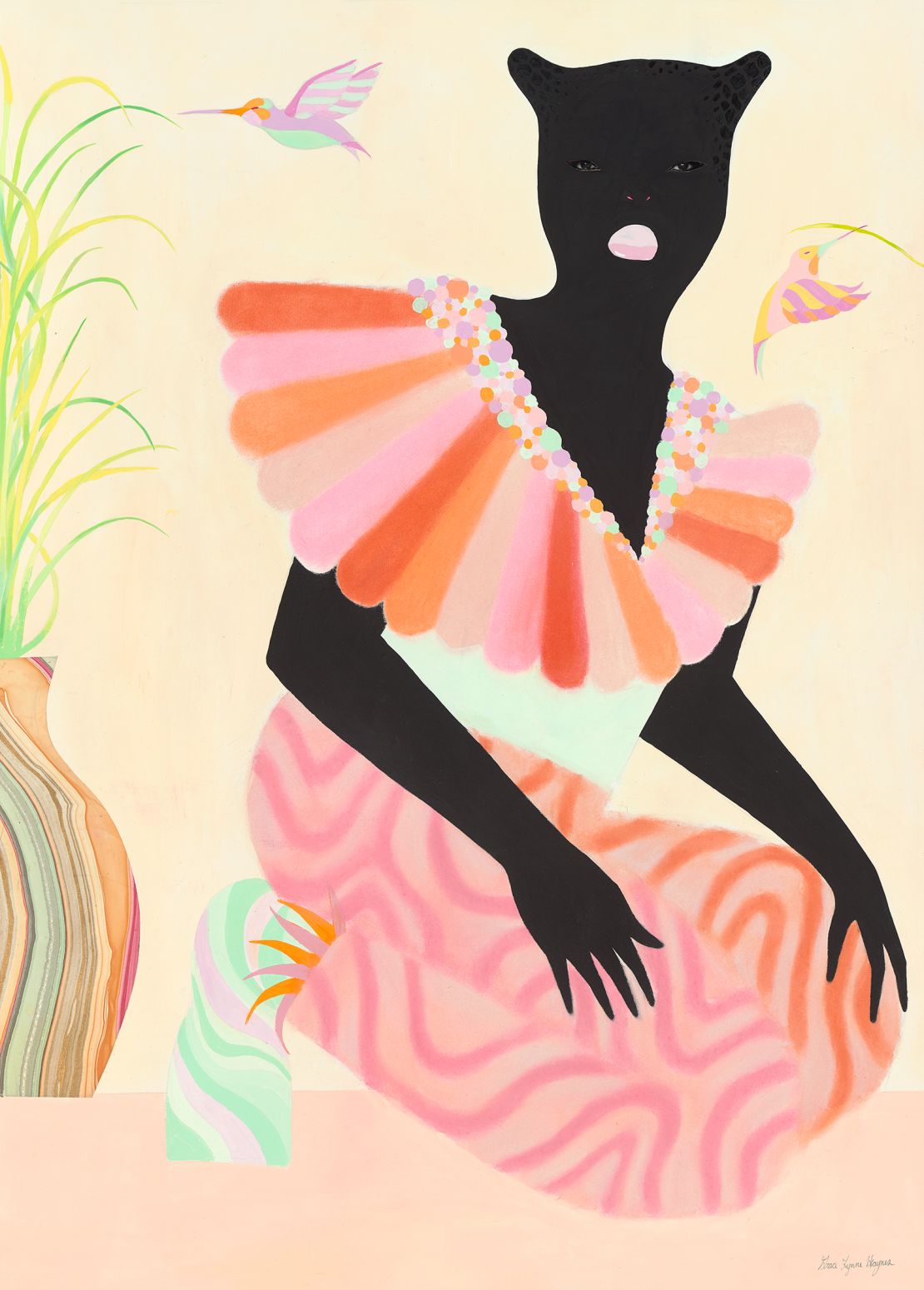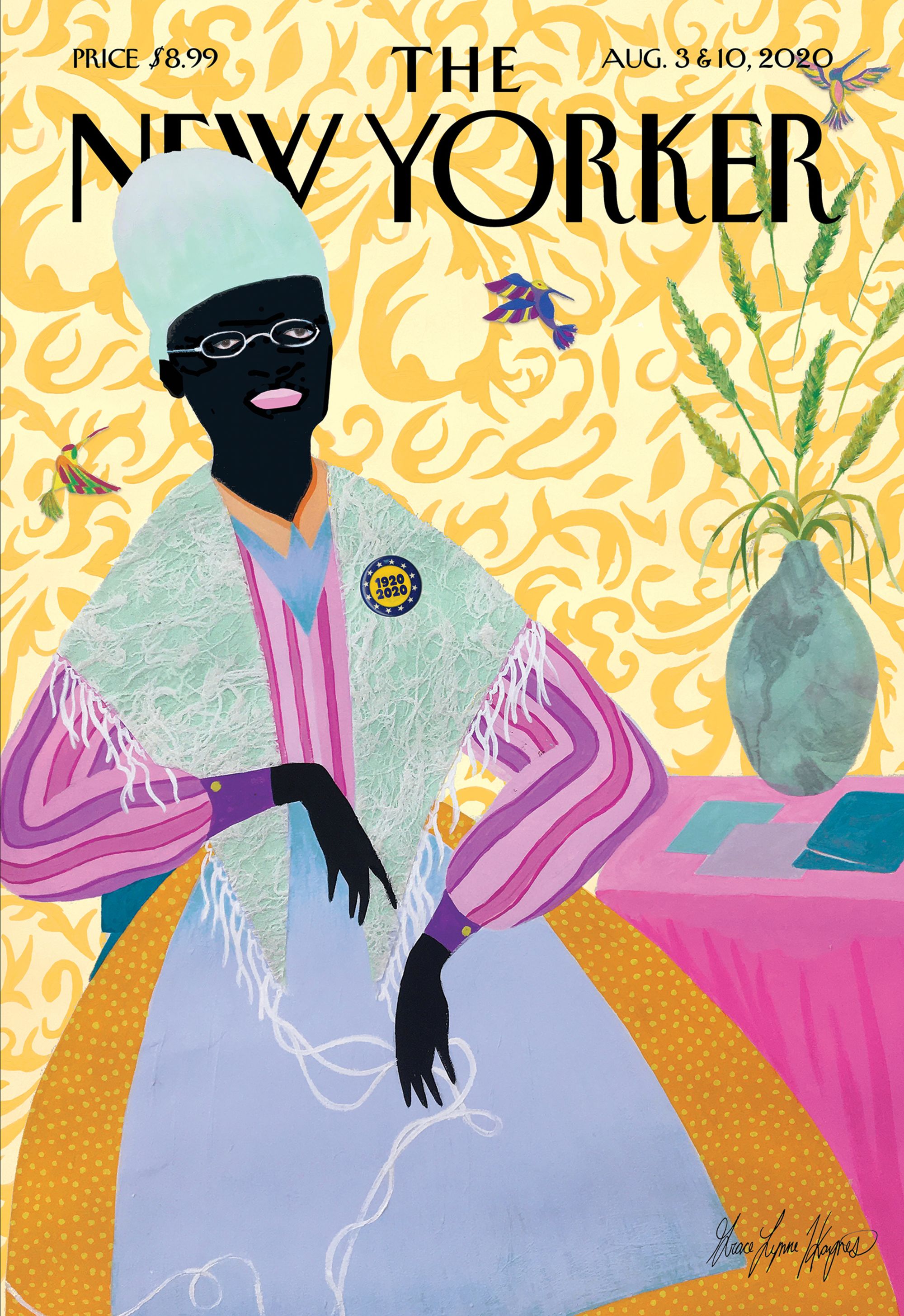Editor’s Note: See the New Yorker’s cover story featuring the art of Grace Lynne Haynes here.
When the New Yorker asked me to illustrate the cover of their new August issue commemorating 100 years of women’s suffrage in America, I chose to depict 19th-century activist Sojourner Truth. Truth was an early advocate for Black women’s rights who didn’t live to see the fruits of her labor. I wanted to point out that while White women gained the right to vote in 1920, it would still take another 45 years – until the Voting Rights Act of 1965 – for women of color to be able to cast their ballots.

My portrait of Truth is based off of existing black-and-white photos of her, but I interpreted them in a playful, modern way. She wears the shawl and cap she was often pictured in, but in vibrant colors and textiles of my own imagination. She sits at a table next to a lively plant rising upwards from a vase while hummingbirds flit around her. I often include hummingbirds in my paintings as a tribute to my grandmother, who grew up in the South and dealt with racism and sexism as a Black woman.
I wanted to feature an activist of color who had a great deal of influence on our current generation. Truth stood out to me because she consistently stood for Black women’s rights and by doing so, helped pave the way for the Voting Rights Act. Her famous speech “Ain’t I a Woman” in 1851 at the Ohio Women’s Rights Convention advocated for the movement to be inclusive of Black women. Her life was remarkable, but tragic, too. She was born into slavery and managed to escape in 1826 with her baby Sophia, but had to leave her other children behind. Two years later, she became the first Black woman to successfully sue a White man, freeing her son after he was sold illegally into slavery in the South. In “Ain’t I a Woman,” she proclaimed: “I have borne thirteen children, and seen most all sold off to slavery, and when I cried out with my mother’s grief, none but Jesus heard me!”

Truth was a woman who defied all odds. She was ahead of her time, a futurist with a grand vision to make America a more equitable country. This cover amplifies her message: We are all women, and we all deserve to be respected. But it also contends with the fact that the road to equality for Black women has been different.
Truth’s advocacy for Black women’s rights is still important today, and resonates with me personally as an artist.
In my own artwork, I explore what it means to be a Black woman in 2020. I mix painting and collage to create colorful, patterned and embellished interior scenes populated by women who are depicted with pitch black skin color. Each figure has a different set of eyes, cut from the pages of magazines.
When I was an undergraduate student my style developed out of necessity. We drew and painted from live models, but they were all White. When I chose to focus on Black womanhood for my thesis, I realized I didn’t know how to paint the deep complexities of melanated skin. Once I started painting flat, dark figures, I surrounded them with bright colors.

Dark and light are often at odds in Western society, especially in religion. I create images that show their harmonious existence, where dark isn’t scorned or seen as treacherous. I strive to showcase dark complexions as elegant, mysterious and sublime.
But dark-skinned women aren’t often seen that way in the media. Artist Kerry James Marshall shows the beauty of Blackness in his own work, and has said he often shows the richness of deep complexions because “The darker the skin, the more marginalized you become.” As a Black woman, I’ve also observed that the darker you are, the less feminine you are perceived – and you are deemed less worthy of protection from society. But in my paintings, black women are in safe spaces, in scenes of leisure, where we can be who we really are when we don’t have the weight of the world on our shoulders.

The women I paint recline on beds or sit by open windows dressed in vivid textiles and patterns inspired by cloth I’ve retrieved in the marketplaces of Senegal, South Africa, and worn by African diaspora. The portrait of Truth occupies that same world.
I wanted to represent Truth’s life but to also make the portrait contemporary. I only had about two days to complete the painting, so I wasn’t really thinking about how it would be received. But as soon as the issue was published, people began sending me messages from all over the world, saying how it touched them or how they didn’t know who Truth was. Schools don’t teach about her enough. Sometimes it’s hard to grasp the power of imagery because we are bombarded with so much of it everyday. How do you make an image that stands out, that means something, when there’s so much going on in the world?

Nina Simone said that it’s an artist’s duty to reflect the times. It’s the art world’s responsibility as well. If Black artists aren’t represented, if LGBTQ+ and immigrant voices aren’t represented, then we’ve failed to hold up the mirror to the era we live in – to reveal something true about the world. I see progress right now in the growing number of voices and perspectives represented, but I think it’s important that the art world doesn’t treat artists of color as trends and then discard them.
Truth understood the power of self-image. She traveled extensively to give speeches, and at a time when photography was in its infancy and self-branding was not yet a glimmer, she used the few photos of herself that existed to promote them. She was a great businesswoman and knew how to combine activism with advertising. Because of that, I wanted to show her as empowered. But she’s tired, too; there’s a sense of heaviness in her expression, in the way she rests her hands in her lap. All around her, the bright colors ease the weight – the robin’s blue wash of her cap, the purple stripes of her blouse and the golden patterns bursting behind her seated frame. The burden she carried is not completely gone, but nearly two centuries later it has begun to lift.
